Fungus Gnats: Identification and Risks
Fungus gnats (Sciaridae) are perhaps the most infuriating garden pests for indoor gardeners. These small, dark-colored flies are harmless-looking at first, but their larvae can be disastrous to your plants, eating away at roots and soil organic matter. If left uncontrolled, a fungus gnat infestation will weaken plants, turn leaves yellow, and even kill them—most notably seedlings and young plants.
The good news: You don’t have to coexist with these insects forever. Through the integration of preventative tactics with specific treatments, you can get rid of fungus gnats and prevent them from coming back.
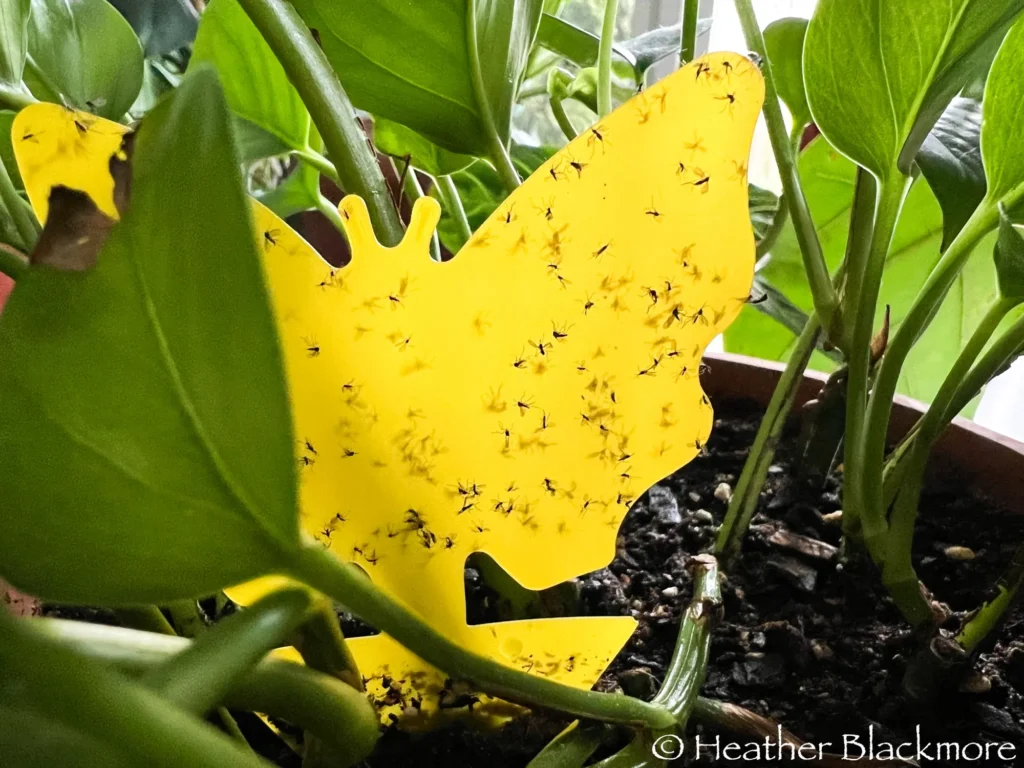
9 Effective Ways to Eliminate Fungus Gnats
1. Hydrogen Peroxide Soil Drench: Kill Larvae on Contact
Hydrogen peroxide (H₂O₂) is a strong but plant-friendly killer of fungus gnat larvae. Diluted, it decomposes into oxygen and water, smothering larvae and airing the soil.
How It Works:
- Oxygen released kills larvae, targeting them in minutes.
- It also decomposes rotting organic matter, taking away the source of food of the gnats.
Step-by-Step Application:
- Combine 1 part 3% hydrogen peroxide with 4 parts of water (e.g., 1 cup peroxide + 4 cups water).
- Water thoroughly until the liquid comes out of the bottom of the pot.
- Repeat 5-7 days for 2-3 weeks to disrupt the life cycle.
Pro Tip: Do not use higher strengths (more than 3%) because they can damage sensitive roots.

2. Yellow Sticky Traps: Kill Adult Gnats
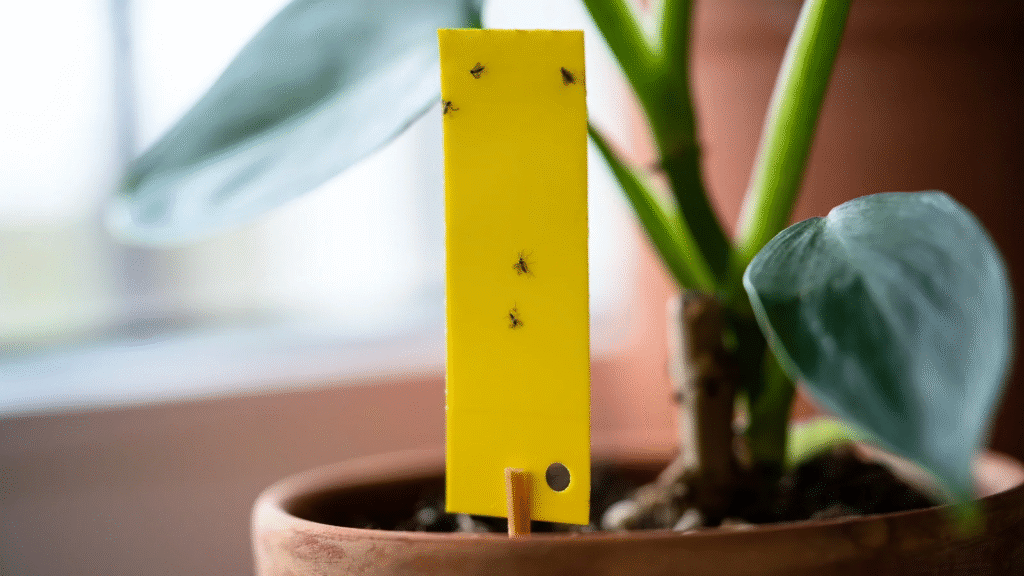
Adult fungus gnats are yellow-attracted, so sticky traps are a great method of breaking their population.
Why It Works:
- Catches adult gnats before they can lay additional eggs.
- Assists with tracking infestation levels.
How to Use Them Most Effectively:
- Position traps horizontally over the soil surface (where the gnats hatch).
- Insert vertical traps among plant foliage to capture flying adults.
- Replace traps when they’re covered (typically every 1-2 weeks).
Note: Sticky traps alone won’t kill larvae—use them in combination with other methods for complete control.
3. Neem Oil: A Natural Insect Growth Regulator

Neem oil is a natural, plant-based pesticide extracted from the neem tree. It interferes with the life cycle of gnats by:
- Killing larvae in the soil.
- Repelling adult gnats.
- Preventing eggs from hatching.
How to Apply Neem Oil:
- Mix 1 tbsp neem oil + 1 tsp mild liquid soap + 1 quart water.
- Soil Drench: Drench the plant with water to kill larvae.
- Foliar Spray: Mist leaves lightly to discourage adults (avoid direct sun exposure afterward).
- Repeat weekly until gnats disappear.
Warning: Neem oil is heavily scented—use in well-ventilated spaces.
4. Mosquito Dunks (BTI): A Biological Larvicide
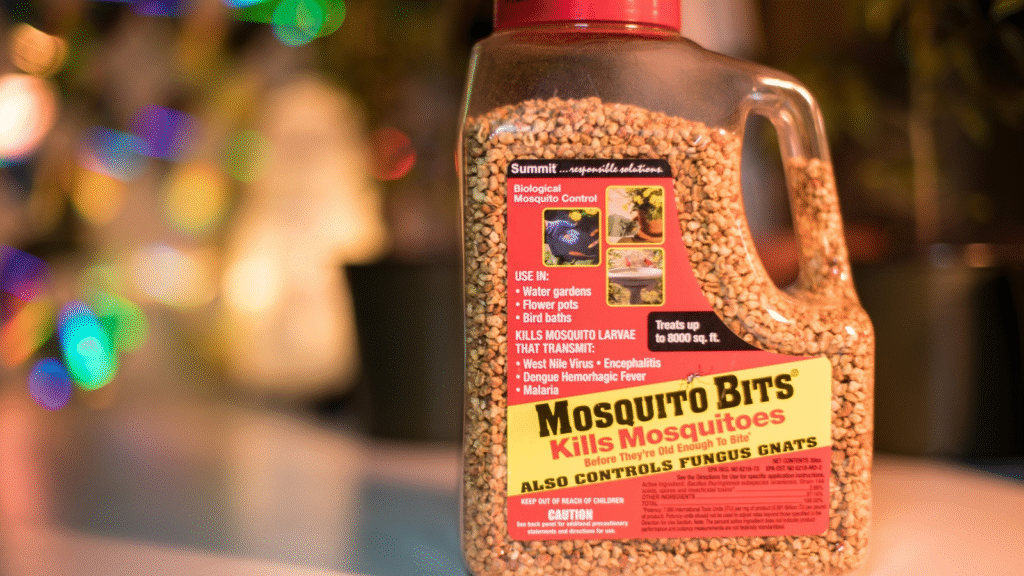
Bacillus thuringiensis israelensis (BTI) is a bacterium that targets fungus gnat and mosquito larvae specifically without affecting plants or other helpful insects.
How to Use Mosquito Dunks/Bits:
- Option 1: Add a small chunk of a mosquito dunk to your watering can.
- Option 2: Soak mosquito bits in water overnight, then water with it.
- Water normally—BTI lasts weeks.
- Apply monthly for prevention.
Best For: Large plant collections and ongoing infestations.
5. Diatomaceous Earth (DE): A Natural Desiccant

Diatomaceous earth is a white powder composed of fossilized algae. It acts by:
- Scratching the exoskeletons of larvae and adults.
- Drying them out to death.
How to Use DE:
- Allow soil to dry slightly prior to use (DE becomes ineffective when damp).
- Sprinkle thin layer on surface of soil.
- Repeat after watering.
- Wear mask to prevent inhalation of dust.
Note: Use food-grade DE—not pool-grade, which is toxic.
6. Allow the Soil to Dry Out Between Waterings
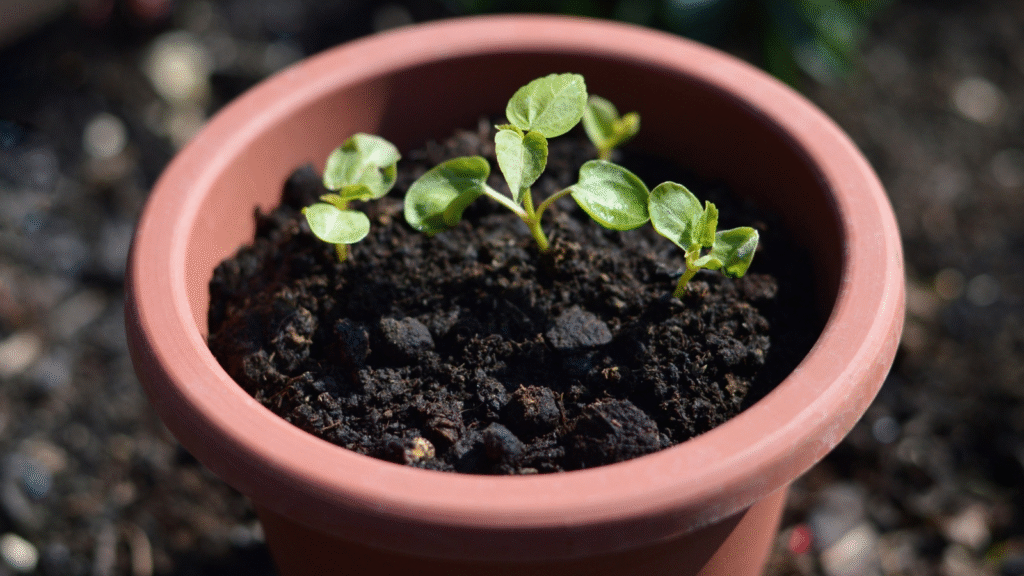
Fungus gnats love wet soil, and underwatering can interrupt their life cycle.
Best Practices:
- Check soil moisture with finger—water only when top 1-2 inches are dry.
- Water from the bottom to keep the top dry.
Warning: Some plants (like ferns, calatheas) like to stay moist all the time—treat differently.
7. Re-Pot in New, Sterile Soil
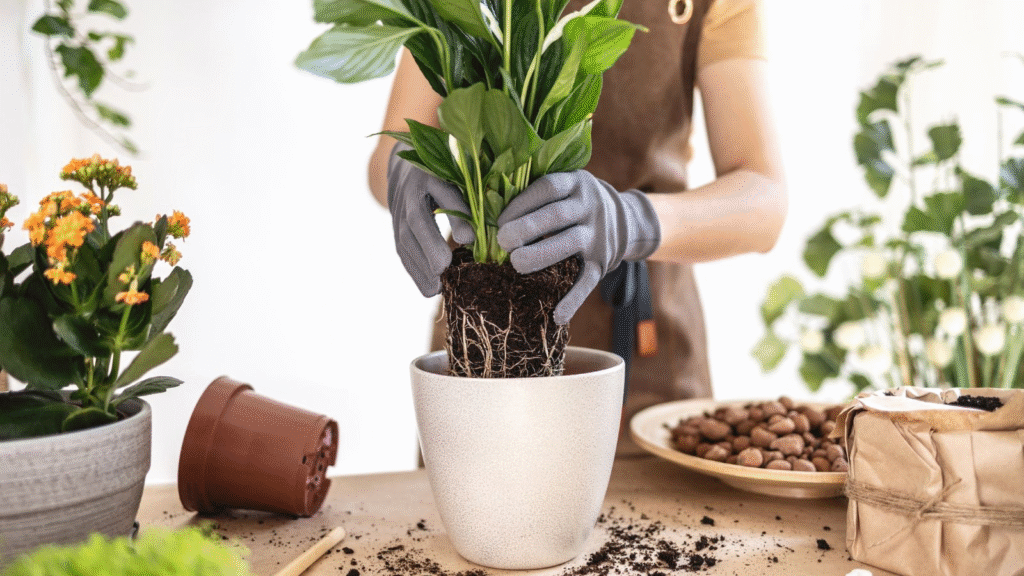
Severe infestations can be eliminated by repotting and removing eggs, larvae, and infested soil.
Step-by-Step Repotting Instructions:
- Carefully remove plant and shake off old soil.
- Soak roots to loosen concealed larvae.
- Sterilize the pot with soapy water or 10% bleach solution.
- Use fresh, well-draining soil (don’t reuse old mix).
Pro Tip: Mix in perlite or sand to enhance drainage and discourage gnats.
8. Sand or Gravel Top Dressing: A Physical Barrier

A ½-inch layer of sand or gravel on the soil surface:
- Bars adults from laying eggs.
- Catches emerging larvae.
How to Apply:
- Apply horticultural sand or fine gravel.
- Provide complete coverage (no soil showing).
- Reapply if disturbed while watering.
Best For: Succulents, cacti, and other dry-tolerant plants.
9. Practice Good Watering Habits for Prevention
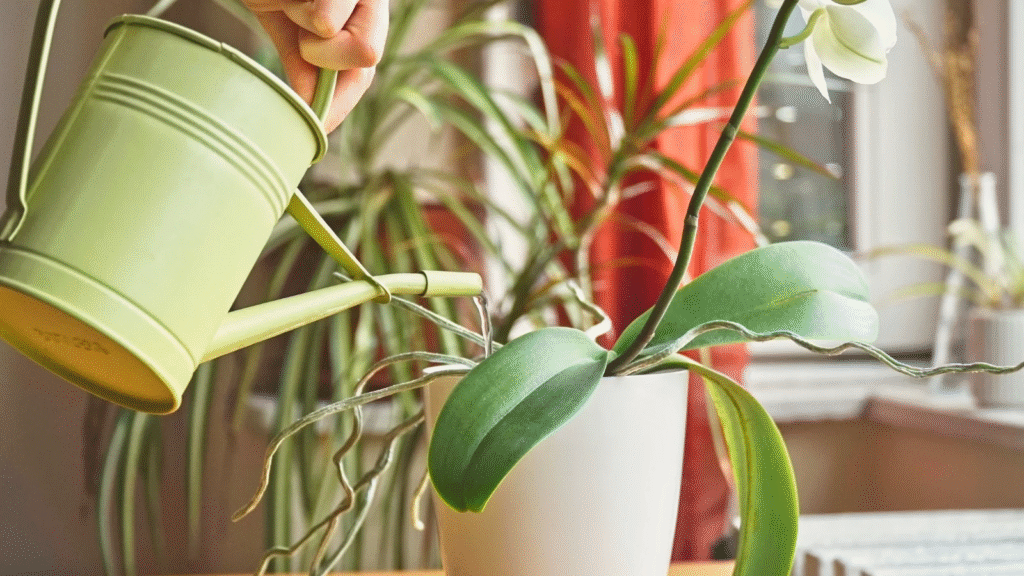
The best defense is staying ahead of gnats coming back.
Long-Term Prevention Strategies:
✔ Water sparingly—keep to a routine.
✔ Utilize well-draining soil (perlite/orchid bark) as an amendment.
✔ Prevent standing water—remove saucer after watering.
✔ Isolate new plants for 2-3 weeks before adding them.
✔ Filter air with a compact fan (gnats despise airflow).
Bonus: Advanced Tactics for Stubborn Infestations
If gnats don’t go away, use these additional steps:
A. Cinnamon Powder (Natural Fungicide)
Sprinkle cinnamon on the soil to discourage fungus growth (larvae food).
B. Beneficial Nematodes
Microscopic worms that attack gnat larvae—best for severe infestations.
C. Apple Cider Vinegar Trap
Place ACV + a single drop of dish soap in a jar—attracts and kills adult gnats.
Final Thoughts: A Multi-Layered Approach Wins
Fungus gnats can be persistent, but using a combination of techniques will eliminate them entirely. Here is a fast-action plan:
- Begin with sticky traps to lower the adult population.
- Use hydrogen peroxide or BTI to kill the larvae.
- Dry out between waterings.
- Repot if necessary, with fresh soil.
- Prevent infestation in the future with improved watering practices.
Stay consistent, and you’ll have fungus gnat-free plants in no time!

